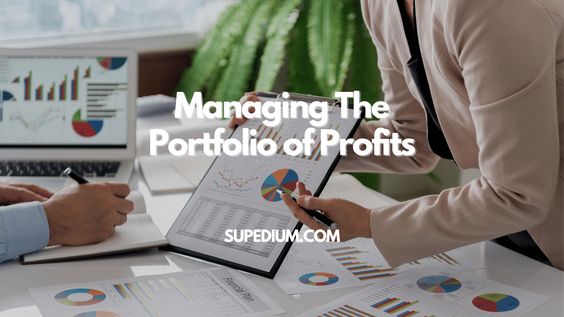![]()
The reason people assume the risks of investing in the first place is the possibility of obtaining a higher rate of return than is attainable in a risk-free setting. i.e. the protected bank account of the FDIC. Risk comes in different ways, but the primary concerns of the average investor are “credit” and “business” risk… Especially when it comes to investing in profits. Credit risk concerns the willingness of companies, government agencies and even individuals to satisfy their financial obligations; market risk refers to the certainty that the market value of the securities chosen will change. We can mitigate the former by choosing only high quality (investment grade) securities, and the latter by diversifying properly, recognising that market value adjustments are natural, and having a plan of action to deal with such fluctuations. (What is the bank doing to get the amount of interest it offers depositors? What is the bank doing in response to higher or lower market interest rate expectations?)
You don’t have to be a licenced fund manager to handle your investment portfolio properly, but you do need to have a long-term strategy and know something about asset allocation… A portfolio organisation method that is frequently overlooked and almost always misused within the financial community. It’s also important to remember that you don’t need a fancy computer programme or a glossy presentation of economic scenarios, inflation estimators, and stock market estimates to get yourself properly aligned with your target. You need common sense, good expectations, patience, discipline, gentle hands, and an oversized driver. The K. I. S. S. Theory needs to be at the core of your Investment Strategy. Focus on working capital would help you coordinate and maintain your investment portfolio.
Planning for retirement should concentrate on the additional income needed from the investment portfolio, and the formula for asset allocation for target achievement would depend on only three variables:
- (1) the amount of liquid investment assets you start with
- (2) the amount of time before retirement,
- (3) the range of interest rates currently available from the investment portfolio.
If you’re not allowing the “engineer” gene to take over, this can be a fairly simple operation. Even if you’re young, you need to quit smoking heavily and build an increasing income stream. If you keep your income increasing, the growth of Market Value (which you are supposed to worship) will take care of itself. Note, higher market value can increase the size of the hat, but it doesn’t pay bills.
First subtract any guaranteed pension benefit from your retirement income target to determine the amount expected from the investment portfolio alone. At this point, don’t worry about inflation. First, calculate the overall market value of your investment portfolios, including corporate strategies, IRAs, H-Bonds… All but the home, the cruise, the jewellery, etc. Liquid personal and pension plan assets only. This total is then compounded by a variety of rational interest rates (6 per cent to 8 per cent right now and, ideally, one of the resulting estimates will be close to the target sum you came up with a moment ago. If you’re within a few years of retirement age, it’s better! To be sure, this step will give you a good picture of where you stand, and that in and of itself, the effort is worth it.
Organizing the portfolio includes agreeing on the required distribution of assets… And that needs some sort of debate. Asset Allocation is the most significant and often overlooked term in the investment lexicon. The most basic confusion is the belief that diversification and distribution of assets are one and the same. Asset Allocation divides the investment portfolio into two basic types of investment securities: Stocks/Equity and Bonds/Income Securities. The majority of Investment Grade securities fall easily into one of these two groups. Diversification is a risk-reduction strategy that specifically controls the size of individual shares as a percentage of total assets. A second myth defines Asset Allocation as a sophisticated strategy used to soften the bottom line effect of stock and bond price fluctuations, and/or a mechanism that automatically (and foolishly) transfers investment dollars from a weaker asset class to a stronger one… A subtly “business timing” system.
Finally, the Asset Allocation Model is frequently misused for the purpose of superimposing a legitimate investment strategy mechanism on risky strategies that have no real value of their own, for example: periodic portfolio repositioning, market timing changes, and mutual fund moving. The Asset Allocation formula itself is sacred and if correctly built, it can never be changed on the basis of conditions in either the Equity or Fixed Income markets. Changes in the investor’s personal condition, goals and objectives are the only problems that can be discussed in the Asset Allocation decision-making process.
Here are some basic guidelines for the distribution of assets:
- (1) All decisions on the allocation of assets shall be based on the cost basis of the securities concerned. The current market value could be more or less and it doesn’t matter.
- (2) Any investment portfolio with a cost base of $100,000 or more should have at least 30 per cent invested in Income Securities, either taxable or tax-free, depending on the size of the portfolio. Tax deferred organisations (all types of retirement programmes) are supposed to house the majority of equity investments. This law extends from age 0 to retirement age-5 years of age. It’s a mistake to have so much of your portfolio in Income Securities under the age of 30.
- (3) There are only two Asset Allocation Groups, none of which is ever identified with a decimal point. The cash in the portfolio is for one group or another.
- (4) From Retirement Age-5 on the Income Allocation must be changed upward before the “fair interest rate measure” shows that you are on target or at least within range.
- (5) At retirement, between 60% and 100% of your portfolio may have to be in Income Producing Securities.
Controlling or executing the Investment Strategy would better be done by those who are least reactive, most decisive, instinctively cool, patient, typically conservative (not politically) and self-realized. Investing is a long-term personal, goal-oriented, non-competitive, hands-on decision-making method that does not require advanced degrees or IQ rocket scientists. In reality, being too smart can be a problem if you have a propensity to over-analyze things. It is helpful to lay down guidelines for the collection and disposal of securities.
For example, restrict equity participation to investment grade, NYSE, dividend-paying, profitable and widely owned firms. Don’t buy any stock unless it is at least 20 per cent lower than its 52-week high and reduces individual equity holdings to less than 5 per cent of the total portfolio. Take a reasonable profit (using 10% as a target) as often as possible. For a 40% Revenue Allocation, 40% of gains and dividends will be allocated to Income Securities.
For fixed income, emphasis on investment grade securities with above-average but not “highest-in-class returns. With Variable Income securities, stop buying up close to 52-week highs and keep individual holdings well below 5%. Keep individual Preferred Stocks and Bonds well below 5%. Closed End Fund positions can be slightly higher than 5% depending on the form. Take a fair profit (more than one year’s income for starters) as soon as possible. With an equity share of 60 per cent, 60 per cent of gains and interest will be transferred to stocks.
Monitoring investment performance The Wall Street approach is inappropriate and problematic for goal-oriented investors. It focuses on short-term dislocations and uncontrollable cyclical shifts, causing persistent disappointment and promoting inappropriate transactional reactions to normal and harmless events. Coupled with a media that thrives on sensationalising something outrageously positive or negative (Google and Enron, Peter Lynch and Martha Stewart, for example), it becomes impossible to keep up with any strategy as environmental factors change.
First greed, then fear, new goods replacing old ones, and always the hope of something better when in reality, the boring and old fashioned basic investment principles still get the job done. Remember, your unhappiness is the most valuable commodity of Wall Street. Don’t joke about them and protect yourself. Focus your success appraisal efforts on target achievement… It’s yours, not theirs. Here’s how, based on the three basic objectives we’ve been talking about: Base Income Growth, Trading Profit Output, and Working Capital Overall Growth.
Base Income includes dividends and interest earned by your portfolio, with no realised capital gains that should ultimately be the greater amount of time. No matter how you cut it, your long-range comfort needs a steady rise in profits, and by using your total portfolio cost base as a benchmark, it’s easy to decide where to spend your accumulating cash. Because a portion of every dollar added to the portfolio is reallocated to income generation, you are assured of an annual rise in the total. If Market Value is used for this analysis, you could invest too much money on a declining stock market to the detriment of your long-term income objectives.
Profit Development is the happy face of market value uncertainty, which is the natural feature of all securities. To make a profit, you must be willing to sell the stocks that most investment strategists (and accountants) want you to marry! Good investors learn to sell those they love, and the more often (yes, in the short term), the better. It’s called trading, and it’s not a four-letter word. You have arrived when you can get to the point where you think of the securities you buy as a high-quality inventory on the shelves of your personal portfolio boutique. You’re not going to see WalMart holding out for higher prices than their regular markup, and neither should you. Reduce the markup on slower movers, and sell damaged goods that you have missed for too long if you have to, and in the thick of it all, try to foresee what your normal, the Wall Street Account Statement, would bring you.
A portfolio of equity securities that have not yet reached their profit targets and are likely to be in negative Market Value Territory since you sold the winners and replaced them with a new inventory… Compounding the ability to win! In the same way, you will see a diversified community of income earners chastised for pursuing their natural patterns (this year at lower rates, which will help you maximise the return on your portfolio and the overall cash flow. If you see major plus signs, you’re not handling the portfolio properly. Working capital Growth (total portfolio cost base) is only going to happen, at a rate that is somewhere between the average return on income securities in the portfolio and the total realised gain on equity in the portfolio.
It would actually be higher with greater stock allocations, since regular trading generates a higher rate of return than more stable revenue allocation positions. But, and this is too large to overlook, when you reach retirement, trading earnings are not assured and the chance of failure (though reduced by a sensible selection process) is greater than that of Income Securities. That’s why the Asset Distribution changes from a higher to a lower Equity Percentage as you reach retirement. So is there really anything like an Income Portfolio that needs to be managed?
Or are we still just dealing with an investment portfolio that wants its Asset Distribution adjusted periodically as we reach the time of life when it has to supply the yacht… And the money from petrol to operate it? By using Cost Basis (Working Capital) as the number that needs to rise, by embracing trading as an appropriate, even cautious approach to portfolio management, and by focusing on increasing income instead of ego, this whole retirement investment thing becomes dramatically less scary. So now you can focus on reforming the tax code, reducing health care expenses, saving social security, and spoiling your grandchildren.
Share This





Be the first to comment